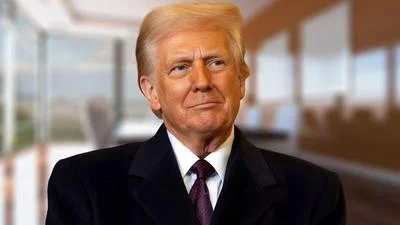The Congressional Record is a unique source of public documentation. It started in 1873, documenting nearly all the major and minor policies being discussed and debated.
“REAUTHORIZATION OF THE FEDERAL HIGHWAY AND TRANSIT PROGRAMS” mentioning the U.S. Dept. of Transportation was published in the Extensions of Remarks section on pages E1900-E1901 on Sept. 25, 2003.
The publication is reproduced in full below:
REAUTHORIZATION OF THE FEDERAL HIGHWAY AND TRANSIT PROGRAMS
______
HON. JAMES L. OBERSTAR
of minnesota
in the house of representatives
Thursday, September 25, 2003
Mr. OBERSTAR. Mr. Speaker, we must quickly enact a multiyear surface transportation bill to provide the assured and continuing funding of transportation programs that is so vital to the Nation, to the States, and to our local communities. But, we must also ensure that the bill that we pass adequately addresses the Nation's transportation needs.
The Transportation and Infrastructure Committee is crafting a bipartisan bill to do just that: to provide the necessary infrastructure investment ($375 billion over six years) to begin to improve our Nation's highway and transit infrastructure. Our country's economic strength, out ability to create jobs and improve business productivity, and out desire to create a safe, efficient, and secure transportation system are all dependent upon increasing investment in our Nation's infrastructure.
We are fortunate to have a strong surface transportation system today. But that system is being challenged by a continuing growth in passenger travel and an ever-increasing demand for fast, efficient movement of freight. As a result, highway travel is growing at 2.3 percent per year and is now 2.8 trillion vehicle miles traveled per year. Commercial trucks alone move 14,000 ton-miles of freight each year for each person in the country. The demand for transit has increased exponentially. In recent years, transit ridership has increased by almost one million trips per day.
Congestion in our surface transportation system, especially urban congestion, is worsening as demand continues to outstrip the ability to add capacity. In the Nation's largest 75 large urban areas, an average commuter encountered 62 hours of delay in the year 2000. In that same year, congestion costs for these 75 urban areas totaled a whopping
$67.5 billion--3.6 billion hours of delay and 5.7 billion gallons of excess fuel consumption.
The challenges of travel growth are compounded by the overwhelming investment needs of our transportation systems. Just a few months ago, the Department of Transportation (DOT) submitted its report on the conditions and performance of our Nation's highways, bridges, and transit systems. DOT's Conditions and Performance Report estimates that all levels of government should be spending a combined average of $127 billion per year to maintain and improve these transportation systems. Based on the historic Federal cost share, the needs assessment suggests a Federal highway and transit program of $51 to $76 billion per year. This level of funding is in marked contrast to the Administration's proposal to spend just $37 billion on highways and transit in 2004 and only slightly higher levels in subsequent years.
Regrettably, this Administration has thrown up roadblocks to increased infrastructure investment at every turn. The Administration's proposed $247 billion six-year reauthorization bill (SAFETEA), has a great name, but little else--it dose not even begin to provide the level of funding necessary to address our infrastructure needs. Moreover the Administration, which has presided over the loss of an astonishing 3.3 million jobs, has sent repeated signals that it opposes any effort to increase infrastructure investment.
We cannot afford to shortchange our Nation's transportation systems. To effectively reduce congestion, to increase mobility, to truly improve highway safety, and to achieve continuing long-term increases in productivity and economic growth, we must invest in our Nation's transportation future. And we must do it now.
That is why the Committee on Transportation and Infrastructure has proposed a highway and transit program to invest $375 billion in our Nation's highways and transit systems over the next six years.
There are stark contrasts between our Committee's proposal and the Administration's proposal.
First, the Committee's proposal meets the investment needs identified in DOT's Conditions and Performance Report to maintain and improve our highways, bridges and transit. The Administration's proposal does not meet those needs.
Second, the Committee's proposal will provide badly needed economic stimulus and do so much more extensively than the Administration's proposal. According to the Administration's own statistical models, the Committee's proposal will create millions of new, family-wage construction jobs. The Federal Highway Administration reports that every $1 billion of federal funds invested in highway infrastructure creates 47,500 jobs and $6.2 billion in economic activity. Moreover, a recent study found that the Committee's bipartisan proposal to invest
$375 billion in surface transportation over the next six years would add $290 billion more to the Nation's Gross Domestic Product than the Administration's proposal. The Committee's proposal would also lead to an additional $129 billion of household disposable income and an additional $98 billion in consumer spending--millions of new, good-
paying jobs, billions of dollars of new consumer spending; now that's the way to get the economy growing again!
Third, the across-the-board increased investment of the Committee's proposal will help us stem the highway death toll that grows ever higher. Last year, 42,850 people died and almost three million more were injured on our highways, the highest number of highway deaths since 1990. In addition to the enormous personal toll of these accidents, the economic cost is a staggering $230 billion a year! To stern this tide, our Committee's bipartisan TEA 21 reauthorization bill significantly increases, and provides more overall funding, for National Highway Traffic Safety Administration (NHTSA), motor carrier safety, and highway safety construction programs than does the Administration's proposal.
Mr. Speaker, Congress must act on a full, six-year reauthorization as quickly as possible. Doing so will create jobs and stimulate economic growth, both badly needed in today's economy. We can effectively reduce congestion, increase safety, and improve mobility throughout the Nation if we invest in our Nation's highways and transit systems in an amount that is sufficient to meet our Nation's growing needs.
I look forward to working with Chairman Young, Subcommittee Chairman Petri, Subcommittee Ranking Member Lipinski, and all of the Members of our Committee and of this House, to invest in our Nation's transportation future.
____________________








